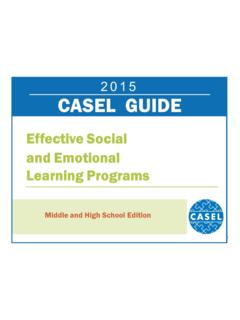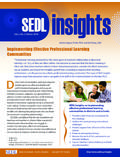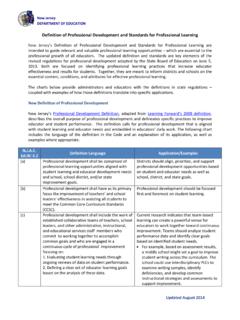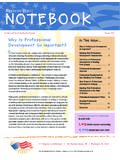Transcription of Creating and Sustaining Effective Professional …
1 Creating and Sustaining EffectiveProfessionalLearning CommunitiesRay Bolam**, Agnes McMahon*, Louise Stoll**, Sally Thomas*and Mike Wallace**, with Angela Greenwood*, Kate Hawkey**,Malcolm Ingram**, Adele Atkinson*and Michele Smith*Universities of Bristol*, Bath** and London, Institute ofEducation**Research Report RR637 RESEARCH Research Report No 637 Creating and Sustaining Effective Professional learning Communities Ray Bolam**, Agnes McMahon*, Louise Stoll**, Sally Thomas* and Mike Wallace**, with Angela Greenwood*, Kate Hawkey**, Malcolm Ingram**, Adele Atkinson* and Michele Smith* Universities of Bristol*, Bath** and London, Institute of Education** The views expressed in this report are the authors and do not necessarily reflect those of the Department for Education and Skills. University of Bristol 2005 ISBN 1 84478 460 6 Contents Acknowledgments Page Executive Summary i Chapter 1 Introduction 1 Chapter 2 The Literature Review 5 Chapter 3 The Survey Findings 28 Chapter 4 The Case Study Findings 58 Chapter 5 Summary of Main Findings 131 Chapter 6 Conclusions and Implications 145 References 158 Appendices Glossary 176 Diagram.
2 Revised Framework 177 Sample questionnaire 178 Sampling Frame for EPLC questionnaires 186 National and EPLC school and pupil sample sizes 187 EPLC survey part 1 Items comparison between PLC stage and phase of education 188 EPLC survey part 3 Items comparison between PLC stage and phase of education 192 Context of the 16 case study sites in 2002/3 195 EPLC Project: Research Questions for the Case Studies 199 Interview schedule 202 Baseline - degree to which characteristics of Effective PLCs were expressed 206 Major facilitatory and inhibitory factors affecting the process of PLC operation 207 Acknowledgments A project of this kind depends upon a great deal of help and cooperation. We wish to express our gratitude to the respondents to the survey questionnaires and also to the members of the Steering Group for their constructive comments and support.
3 Our particular thanks go to the headteachers, teachers, support staff and pupils of the 16 case study schools. Finally, we are grateful to our sponsors, the DfES, the GTCe and the NCSL, for funding this project. We hope that all of these individuals and groups find our report to be of practical value. The EPLC Project Team The team consisted of five co-directors - Ray Bolam**, Agnes McMahon*, Louise Stoll**, Sally Thomas* and Mike Wallace**; three researchers - Angela Greenwood*, Kate Hawkey** and Malcolm Ingram**; two research assistants - Adele Atkinson* and Mich le Smith*; two Research Associates - Tony Bailey and David Crandall; and the Project Secretary - Kate King*. (Universities of Bristol*, Bath** and London, Institute of Education**) iEXECUTIVE REPORT This report summarises the main finding from the Creating and Sustaining Effective Professional learning Communities (EPLC) project, funded by the Department for Education and Skills (DfES), the General Teaching Council for England (GTCe) and the National College for School Leadership (NCSL) from January 2002 to October 2004.
4 MAIN CONCLUSIONS 1. The idea of a Professional learning community (PLC) is one well worth pursuing as a means of promoting school and system-wide capacity building for sustainable improvement and pupil learning . 2. An Effective Professional learning community (EPLC) fully exhibits eight key characteristics: shared values and vision; collective responsibility for pupils learning ; collaboration focused on learning ; individual and collective Professional learning ; reflective Professional enquiry; openness, networks and partnerships; inclusive membership; mutual trust, respect and support. 3. Pupil learning was the foremost concern of people working in PLCs and the more developed a PLC appeared to be, the more positive was the association with two key measures of effectiveness - pupil achievement and Professional learning .
5 4. PLCs are created, managed and sustained through four key operational processes: optimising resources and structures; promoting individual and collective learning ; explicit promotion and Sustaining of an EPLC; and leadership and management. Furthermore, the extent to which these four processes are carried out effectively is a third measure of overall PLC effectiveness. 5. Staff in more developed PLCs adopt a range of innovative practices to deal with the inhibiting and facilitating factors in their particular contexts. Many of these practices are potentially useful for other schools. 6. Investors in People is a useful tool and could profitably be used alongside other approaches in the early stages of developing a more Effective PLC. 7. PLCs change over time in ways and in particular aspects that may or may not be planned.
6 The idea of three stages of development starter, developer and mature provides some useful insights into these changes and ways of responding to them but needs modifying to be of real help for practitioners and researchers. 8. Although PLCs have common characteristics and adopt similar processes, the practical implications for developing a PLC can only be understood and worked out in the specific conditions like phase, size and location of particular contexts and settings. 9. The project s working definition offers a practical basis for staff in schools wishing to promote an Effective PLC. In so doing, they should take account of the issues associated with the components of that definition, as discussed in the main report and, in particular, relate the definition to their own context. ii10.
7 Staff in schools wishing to promote and sustain an EPLC should monitor and evaluate the development of their characteristics and the implementation of their processes over time, and take appropriate follow-up action to maximise their effectiveness. 11. The Provisional Model presented in the full report summarises findings from this study and should prove productive in further illuminating issues associated with EPLCs for practitioners and researchers. 12. Schools wishing to promote a PLC might usefully adapt the Development Profile, presented in the full report, for use as a practical self-audit tool, possibly within the framework of their Ofsted self-evaluation strategy. 13. Serious consideration should be given to the possibility of commissioning and carrying out further research and development work along the lines outlined in the full report.
8 14. Given our substantive general conclusion that the idea of a PLC is one well worth adopting in order to promote school and system wide capacity building for sustainable improvement and pupil learning , we suggest that schools, external support agencies and national policy makers should take forward the findings and conclusions contained in this report. 1. INTRODUCTION AND BACKGROUND We were asked to find out how feasible and useful the idea of a PLC was and what practical lessons could be learned from experience here and elsewhere. Accordingly, over the 34-month period of the project, we carried out four main research activities: a literature review; an analysis of questionnaire survey responses from 393 schools representative of nursery, primary, secondary and special schools across England - including detailed statistical comparisons of key survey items with pupil outcome data; case studies in 16 school settings; three workshop conferences for representatives from the case study schools and the project Steering Group.
9 In addition, we carried out an extensive range of dissemination activities, including setting up a Project website. Our working definition was: iiiAn Effective Professional learning community has the capacity to promote and sustain the learning of all professionals in the school community with the collective purpose of enhancing pupil learning . Our overall finding was that the practitioners in the survey and case study schools generally responded positively to the idea of a PLC and, for the most part, to the working definition. Even though not many were familiar with the term, or used it in their everyday Professional conversations, most appeared to find it helpful and also to understand what it conveyed. Taken together with the evidence from the survey and case studies about impact on pupil and Professional learning , as summarised below, our overall, general conclusion is, therefore, that the idea of a PLC is one well worth pursuing as a means of promoting school and system-wide capacity building for sustainable improvement and pupil learning .
10 2. WHAT ARE THE CHARACTERISTICS OF Effective PLCS? Our first task was to identify and convey the characteristics of Effective Professional learning communities and, implicitly, why they are worth promoting. The Project findings all confirmed the existence and importance of the five PLC characteristics identified in the literature review - shared values and vision, collective responsibility for pupils learning , reflective Professional inquiry, collaboration focused on learning and group as well as individual, Professional learning . In addition, three more characteristics were found to be important: inclusive membership; mutual trust, respect and support; openness, networks and partnerships. We investigated the question Are PLCs worth promoting? in terms of their effectiveness.

















